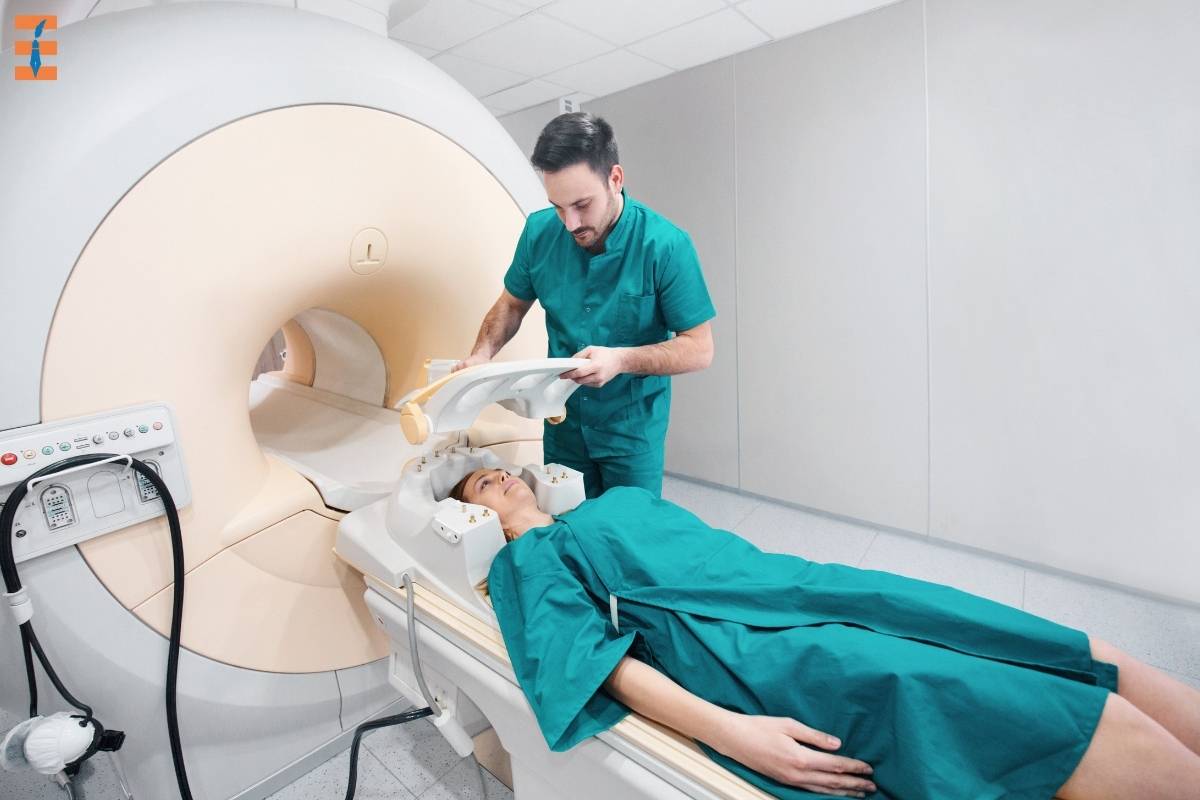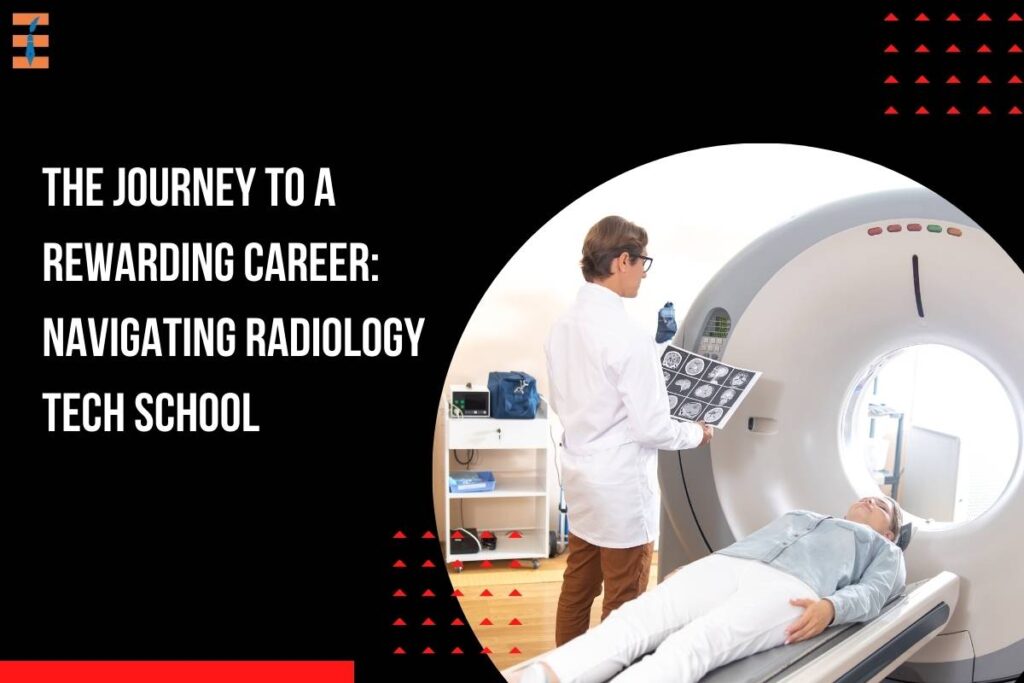The field of radiologic technology is crucial in healthcare, helping to diagnose and treat medical conditions. Radiologic technologists, also known as radiographers or X-ray techs, are professionals trained to perform imaging exams like X-rays, MRI scans, and CT scans. To become a radiologic technologist, enroll in a radiology tech school. This educational path gives students the knowledge and skills they need for this exciting field.
This article explores what radiology tech school is like, including the courses, hands-on training, and job opportunities for graduates.
Understanding the Role of a Radiologic Technologist
Before diving into the specifics of radiology tech school, it is essential to understand the role of a radiologic technologist. These professionals are responsible for operating imaging equipment, positioning patients accurately, and ensuring the quality of the images produced. Their expertise is crucial in assisting radiologists—medical doctors specialized in interpreting medical images—in diagnosing illnesses and injuries. Radiologic technologists must have a solid foundation in anatomy, patient care, and imaging techniques, all of which are covered extensively in radiology tech school.
Choosing the Right Radiology Tech School

Selecting the appropriate radiology tech school is a critical step in one’s educational journey. Prospective students should consider several factors when making this decision, including accreditation, program length, and clinical training opportunities. Accreditation by a recognized agency, such as the Joint Review Committee on Education in Radiologic Technology (JRCERT), ensures that the program meets high educational standards and adequately prepares students for certification exams and professional practice.
Programs in this field typically offer either an associate degree or a bachelor’s degree in radiologic technology. An associate degree program usually takes about two years to complete and is a common pathway for entry-level positions. On the other hand, a bachelor’s degree program offers a more comprehensive education, including advanced imaging techniques and healthcare management courses, and may provide better career advancement opportunities.
Curriculum and Coursework in Radiology Tech School
The curriculum in radiology tech school is designed to provide students with a balanced mix of theoretical knowledge and practical skills. The coursework covers various subjects, including:
- Anatomy and Physiology: Understanding the human body’s structure and function is fundamental for radiologic technologists. Courses in anatomy and physiology provide a comprehensive overview of the body’s systems and organs.
- Radiographic Procedures: Students learn the techniques for performing different types of imaging procedures, including X-rays, fluoroscopy, and mammography. This includes patient positioning, equipment operation, and safety protocols.
- Radiation Physics and Protection: A thorough understanding of radiation physics is essential for ensuring the safe and effective use of imaging equipment. Courses in this area cover the principles of radiation production, interaction with matter, and methods for protecting patients and healthcare workers from excessive exposure.
- Patient Care and Ethics: Radiologic technologists must provide compassionate care to patients while adhering to ethical standards. Courses in patient care cover communication skills, patient assessment, and ethical considerations in medical imaging.
- Image Analysis and Quality Assurance: Producing high-quality diagnostic images is crucial for accurate diagnosis. Students learn how to evaluate image quality, identify artifacts, and implement quality assurance measures.
- Advanced Imaging Modalities: Some radiology tech school programs offer courses in advanced imaging techniques, such as MRI, CT, and ultrasound. These courses provide specialized knowledge and skills that can enhance career prospects.
Clinical Training and Hands-On Experience
One of the most important aspects of radiology tech school is the clinical training component. Clinical rotations provide students with hands-on experience in real healthcare settings, allowing them to apply their classroom knowledge to practice. During these rotations, students work under the supervision of experienced radiologic technologists and gain proficiency in performing various imaging procedures.

Clinical training is typically conducted in hospitals, outpatient imaging centers, and clinics. It is designed to expose students to a wide range of patient populations and medical conditions, ensuring they are well-prepared for the diverse scenarios they will encounter in their professional careers. Additionally, clinical experiences help students develop critical skills such as patient communication, problem-solving, and teamwork.
Certification and Licensure
After completing radiology tech school, graduates must obtain certification and licensure to practice as radiologic technologists. The American Registry of Radiologic Technologists (ARRT) is the primary certifying body for radiologic technologists in the United States. To become certified, candidates must pass the ARRT certification exam, which assesses their knowledge and skills in radiologic technology.
Licensure requirements vary by state, but most states require radiologic technologists to be certified by the ARRT. Maintaining certification requires ongoing continuing education to ensure that technologists stay current with advancements in the field and continue to provide high-quality care.
Career Opportunities and Advancement
A career as a radiologic technologist offers a range of opportunities for growth and specialization. Radiologic technologists can work in various healthcare settings, including hospitals, diagnostic imaging centers, physician offices, and outpatient care facilities. The demand for radiologic technologists is expected to grow in the coming years, driven by an aging population and the increasing use of diagnostic imaging in medical care.
For those looking to advance their careers, further education and specialization are key. Radiologic technologists can pursue certifications in advanced imaging modalities such as MRI, CT, and mammography. Additionally, some technologists choose to specialize in areas like interventional radiology or radiation therapy. Advanced certifications and specializations can lead to higher salaries and increased job responsibilities.
The Importance of Continuing Education
The field of radiologic technology is constantly evolving, with new imaging techniques and technologies being developed regularly. To stay current with these advancements, radiologic technologists must engage in continuing education throughout their careers. Many radiology tech schools offer continuing education courses and workshops that allow technologists to expand their knowledge and skills.
Continuing education is not only important for maintaining certification but also for providing the best possible care to patients. By staying informed about the latest developments in the field, radiologic technologists can ensure they are using the most effective and safe imaging practices.
The Impact of Technology on Radiologic Technology
Advancements in technology have significantly impacted the field of radiologic technology, enhancing the capabilities of radiologic technologists and improving patient care. Digital imaging, for example, has replaced traditional film-based imaging in many facilities, offering numerous advantages such as faster image acquisition, improved image quality, and easier image storage and sharing.
Additionally, the development of advanced imaging modalities like MRI and CT has expanded the diagnostic capabilities of radiologic technologists. These modalities provide detailed cross-sectional images of the body, allowing for more accurate diagnosis and treatment planning. Radiology tech school programs have adapted to these technological advancements by incorporating training in digital imaging and advanced modalities into their curricula.
Artificial intelligence (AI) is another emerging technology that is poised to transform the field of radiologic technology. AI algorithms can assist radiologic technologists in tasks such as image analysis, anomaly detection, and workflow optimization. As AI technology continues to evolve, it will be important for training programs to integrate education in AI applications to prepare future technologists for the changing landscape of medical imaging.
The Rewards of a Career in Radiologic Technology

A career as a radiologic technologist offers numerous rewards, both professionally and personally. Radiologic technologists play a crucial role in patient care, helping to diagnose and treat medical conditions through the use of imaging technology. The work is intellectually stimulating, requiring a combination of technical expertise and interpersonal skills.
In addition to the satisfaction of contributing to patient care, radiologic technologists often enjoy good job security and competitive salaries. According to the U.S. Bureau of Labor Statistics, the median annual wage for radiologic technologists was $63,710 in May 2020. Job prospects are also favorable, with employment in the field projected to grow 7% from 2019 to 2029, faster than the average for all occupations.
Conclusion
Radiology tech school opens the door to a rewarding and exciting career in radiologic technology. Students learn through a mix of tough classes and real-world clinical training, gaining the knowledge and skills they need to succeed in this important healthcare field. As technology advances, radiologic technologists will become even more crucial in diagnosing and treating medical conditions.

